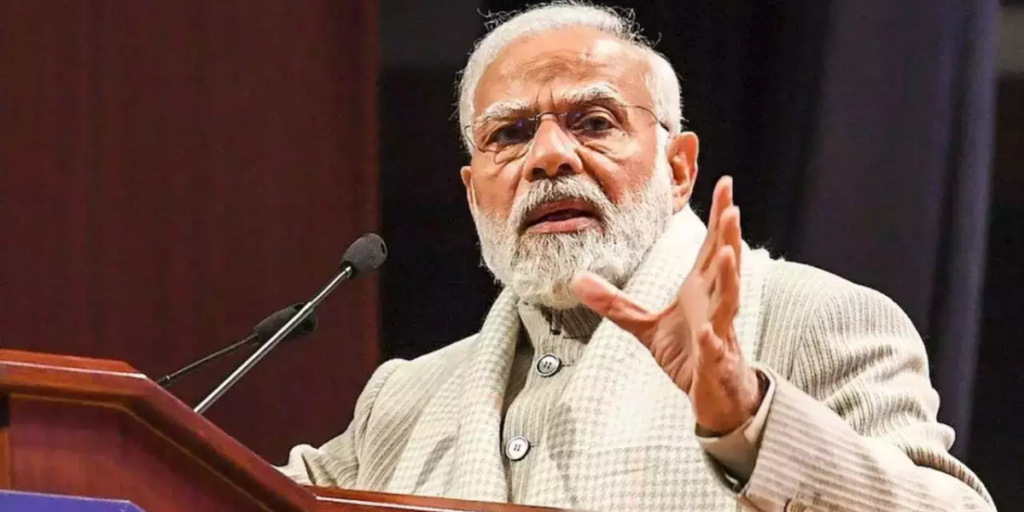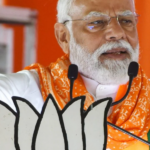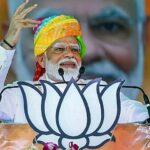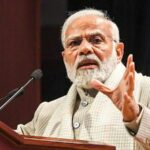This is New Delhi, India. In the beginning of his campaign for the approaching election in India in 2024, Prime Minister Narendra Modi announced a goal for his ruling alliance, which is led by the Bharatiya Janata Party (BJP). This goal is ambitious even by the standards of his successful coalition.
“Abki baar 400 paar,” Modi said, asserting that the National Democratic Alliance, the collection of parties that is currently in power, would surpass the 400-seat threshold in a house of 543 legislative members, with the BJP alone capturing 370 seats. The Congress Party, which is now in opposition, gained more than 400 seats in the Indian Parliament in 1984, following the assassination of Prime Minister Indira Gandhi. This is the only time in India’s 77 years of independence that any party or alliance has been successful in gaining so many seats.
According to analysts, the success of Modi’s calculations could be contingent on one significant region of the country, which has so far remained largely resistant to the Hindu majoritarian charms of the BJP: the south of the country. The first phase of India’s 44-day, seven-stage election is scheduled to take place on April 19, and analysts say this region is the most likely to be affected.
India’s most economically wealthy region is comprised of the five southern states of Tamil Nadu, Karnataka, Andhra Pradesh, Kerala, and Telangana, as well as the union territories of Puducherry and Lakshadweep. These states are home to approximately twenty percent of the country’s total population. The southern region of the country is responsible for more than thirty percent of the gross domestic product (GDP) of the nation.
In spite of Modi’s assertion that his administration has been instrumental in bolstering the Indian economy, the Bharatiya Janata Party (BJP) only managed to secure thirty of the region’s 131 seats in 2019, with the great bulk of those seats coming from the state of Karnataka. It was unsuccessful in the states of Tamil Nadu, Kerala, and Andhra Pradesh, and it was unsuccessful in the parliamentary elections of Puducherry and Lakshadweep. In the opinion of certain analysts, a repetition is unavoidable.
On a national scale, the Bharatiya Janata Party (BJP) secured 303 out of 543 seats, practically reaching its maximum in the majority of the northern states, which have traditionally been its strongholds. This leaves the southern region as the territory that the party is likely to need to gain in order to obtain a greater mandate than it did in 2019.
In Andhra Pradesh and other southern states, the Bharatiya Janata Party (BJP) is extremely unpopular. Mohan Guruswamy, a political analyst and the chairman of the Centre for Policy Analysis (CPA), a think tank based in New Delhi, stated that anyone who aligns themselves with the Bharatiya Janata Party (BJP) as a political party will perform poorly in upcoming elections.
An economist named Parakala Prabhakar, who is also the husband of Nirmala Sitharaman, who is India’s minister of finance, predicted that the upcoming election will reveal a “north-south divide.” The government that Prabhakar’s wife is a significant member of has been the subject of Prabhakar’s criticism.
Challenges faced by the Bharatiya Janata Party (BJP) in the southern region of India are not new. The region has been comparatively resistant to the religion-driven politics that have traditionally been characteristic of the BJP. This is because the region has significantly superior development indices than the north, notably on education and health.
For instance, the state of Kerala, which is located in the south, has an infant mortality rate that is practically identical to that of the United States, with six fatalities occurring for every 1,000 births. The ratio for the state of Madhya Pradesh, which is administered by the Bharatiya Janata Party (BJP), is 48, which is comparable to the rate in Afghanistan, which is currently experiencing a war.
As a result of these relative development gains, the Hindu majoritarian Hindutva ideology of the BJP is less appealing to voters in the southern region, according to Prabhakar.
After the Telugu Desam Party (TDP), a regional force in the state of Andhra Pradesh, made the decision to form an alliance with the Bharatiya Janata Party (BJP) in the 2024 election, Kishore Chandra Deo, a former federal minister who resigned from the TDP in February, agreed to the terms of the agreement. For example, Deo stated that it is possible to bring about religious unification in the northern region of India, however in the southern region of India, this is not conceivable.
“Here, the Ram temple is not an issue,” he added, referring to the temple in the city of Ayodhya that was dedicated to the Hindu god Ram by Gujarat Prime Minister Narendra Modi in the month of January. Hardline Hindu activists were responsible for the demolition of the Babri Masjid mosque in December 1992, which was established in the 16th century. The temple was constructed on the rubble of the mosque.
The viewpoint expressed by Deo was mirrored by Palanivel Thiaga Rajan, who is currently serving as the minister for information technology and digital services in Tamil Nadu. Prior to this, he was the minister of finance for the state.
Over the course of several hundred years, the south has maintained a long-standing culture of peaceful coexistence with people of all religious beliefs. In an interview with Al Jazeera, Rajan stated that any attempts to polarize the community will undoubtedly lead to negative consequences.
It is now time to put that notion to the test, and the testing will begin on Friday.

Modi’s Tamil Nadu push
The Bharatiya Janata Party (BJP) and Prime Minister Narendra Modi have been exerting a great deal of effort in order to accomplish their goal of gaining a foothold in the state of Tamil Nadu. With 39 seats, Tamil Nadu is the state that sends the biggest number of lawmakers from the southern region to the national legislature.
Modi has made at least six trips to the state in the lead-up to the election, during which he has used an app powered by artificial intelligence that translates his Hindi speech into Tamil in real-time for audiences. During these trips, he has also reportedly broken down in tears due to the support that the BJP claims he has received during rallies. The election will take place on April 19.
Additionally, Modi has reignited a dispute that was settled fifty years ago between New Delhi and Colombo regarding the island of Katchatheevu, which is located in Sri Lanka. Those in power under Modi and his administration have asserted that the island was a gift from the previous Congress administration to Sri Lanka. The Dravida Munnetra Kazhagham (DMK), which is an ally of the Congress party, has historically been opposed to Sri Lanka’s sovereignty of the island of Katchatheevu, which is located barely 33 kilometers (20 miles) off the coast of India. This has made Katchatheevu a contentious issue in Tamil Nadu through the years.
The Bharatiya Janata Party (BJP) and Prime Minister Narendra Modi have also made an effort to accuse the DMK of being anti-Hindu. In September of last year, Udhayanidhi Stalin, the leader of the DMK, made controversial remarks in which he compared “Sanatana Dharma” (the eternal religion) to conditions such as dengue and malaria. Many Hindus use Sanatana Dharma as an alternative name to Hinduism; however, others, especially the DMK, have long associated it with the caste system that is ingrained in ancient Hinduism. Sanatana Dharma is a term that represents the Hindu religion.
It has been stated by some pollsters based in New Delhi that the Bharatiya Janata Party (BJP) could raise its support in Tamil Nadu to twenty percent from less than four percent in 2019, and it could even win a few seats as a result of this effort.
Analysts believe that this is simpler to say than it is to do.
Cracking the southern fortress
Ideas of nationalism have been viewed with skepticism in Tamil Nadu for a long time. In the southern state, they are seen as a strategy to protect the historical dominance of Brahmins, who sit at the top of India’s complex caste hierarchy. This has been the case for decades. Tamil Nadu’s politics have been formed by anti-Brahmanical sentiments.
One of the early idealogues of what is now known as the Dravidian movement was EV Ramasamy Naicker, who was better known by his pen name, Periyar. He was critical of Hinduism and parted with the Congress, which was commonly seen as an upper caste party for the most of the 20th century. Periyar was a member of the Dravidian movement. Periyar has been the subject of regular criticism from BJP officials; yet, the DMK and its competitor, the All India Anna DMK (AIADMK), strongly believe in the legacy that he has left behind.
For the past two decades, the state of Karnataka, which is located to the northwest of Tamil Nadu, has proven to be a far more fertile ground for the Bharatiya Janata Party (BJP) in southern India. Karnataka, which is considered to be India’s IT and startup hub, was ruled by the Bharatiya Janata Party (BJP) from 2008 to 2013, and then again from 2018 to 2023. Bengaluru is located in Karnataka. In the national election held in 2019, it was successful in winning 25 of the state’s 28 seats.
A campaign that alleges that Modi’s government has participated in “discrimination” and “injustice” against southern states would support the Congress party, which is now back in power in Karnataka. The Congress party, which won only one seat in 2019, will be expecting to win more seats in the upcoming election.
According to RS Nilakantan, the author of South vs. North: India’s Great Divide, the southern states receive a significantly lower amount of resources from the central pool of taxes collected by the federal government than what the residents of these states contribute through taxes. This is in comparison to the northern states.
Those who advocate for this strategy argue that the federal government ought to provide additional assistance to northern states that have lower social indices in order to assist those states in improving their situation. On the other hand, critics claim that this is a form of punishment for the success of southern states, despite the fact that there is little evidence to suggest that northern states are making rapid advancements in health or education by utilizing central resources.
As an example, the minister for Tamil Nadu, Rajan, stated that the state of Tamil Nadu is receiving 29 paise for each rupee that it provides to the government of the union. It has come to our attention that the ruling parties of the southern states have been forced to stage demonstrations in Delhi in order to bring attention to the injustice that has been committed against them and to fight for the preservation of federalism.
These concerns in southern states have been compounded by the possibility of delimitation by the year 2026. Delimitation is a procedure that involves redrawing the borders of seats in order to ensure that they have nearly equal numbers of voters.
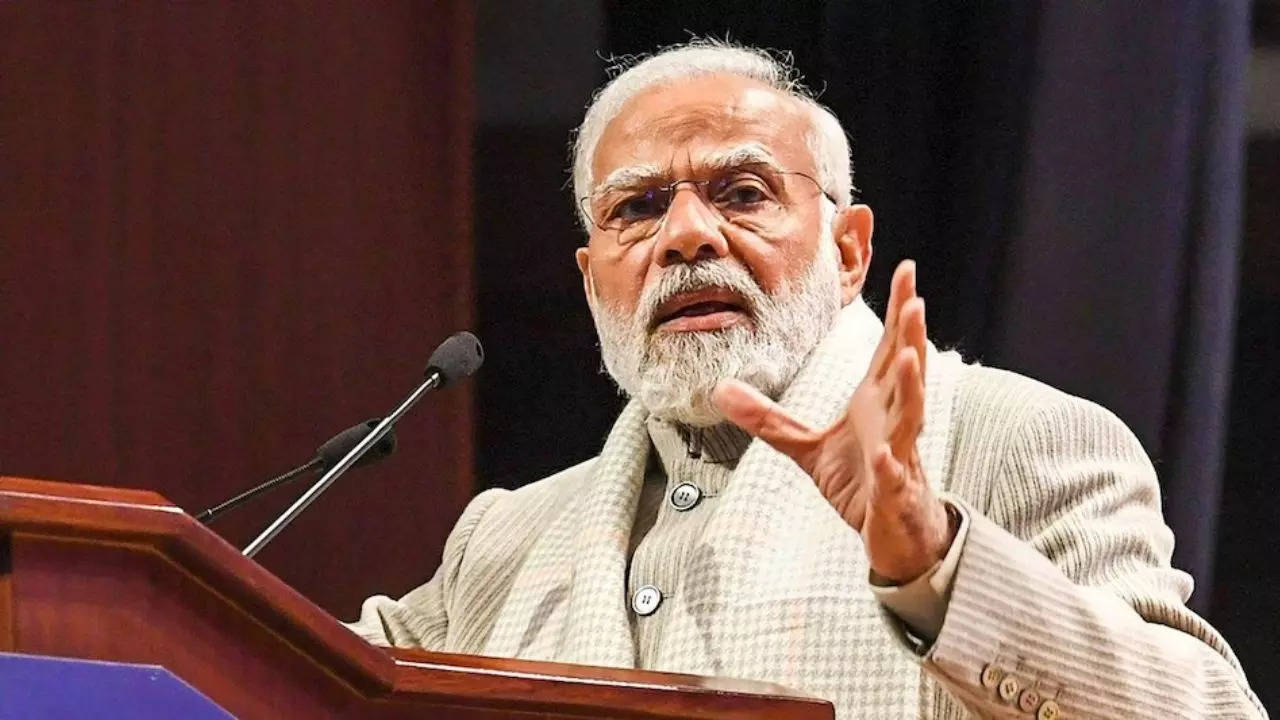
The delimitation process has the potential to dramatically reduce the number of seats held by the south in parliament, hence diminishing the south’s political power. This is due to the fact that the south of India has been significantly ahead of the north in population control measures. For example, according to Nilakantan, the number of seats in Tamil Nadu might decrease from 39 to 30, while the number of seats in northern Uttar Pradesh, which is the most populated state in India, could increase from 80 to 90 from the current level.
According to Rajan, “The North versus South is not just an emotionally charged issue.” “It all comes down to certain cold, hard facts and figures.”
